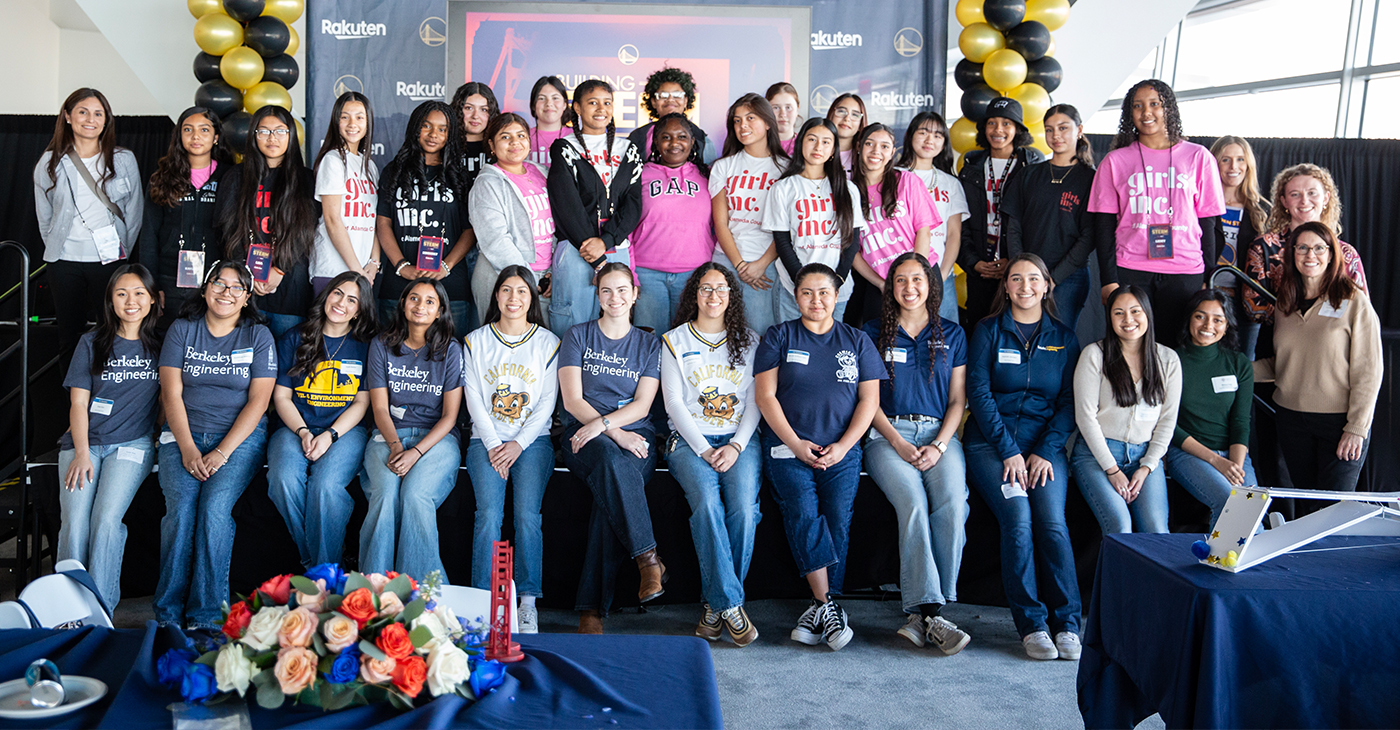Technology
Prying Parents: Phone Monitoring Apps Flourish in S. Korea

A promotional banner of mobile apps that block harmful contents, is posted on the door at a mobile store in Seoul, South Korea, Friday, May 15, 2015. The banner reads: “Young smartphone users, you must install apps that block harmful content.” (AP Photo/Lee Jin-man)
Youkyung Lee, ASSOCIATED PRESS
SEOUL, South Korea (AP) — Lee Chang-june can be miles from his 12-year-old son but still know when he plays a smartphone game. With the press of an app he can see his son’s phone activity, disable apps or totally shut down the smartphone.
The app, “Smart Sheriff,” was funded by the South Korean government primarily to block access to pornography and other offensive content online. But its features go well beyond that.
Smart Sheriff and at least 14 other apps allow parents to monitor how long their kids use their smartphones, how many times they use apps and which websites they visit. Some send a child’s location data to parents and issue an alert when a child searches keywords such as “suicide,” ”pregnancy” and “bully” or receives messages with those words.
In South Korea, the apps have been downloaded at least 480,000 times.
The number will likely go up. Last month, South Korea’s Korea Communications Commission, which has sweeping powers covering the telecommunications industry, required telecoms companies and parents to ensure Smart Sheriff or one of the other monitoring apps is installed when anyone aged 18 years or under gets a new smartphone. The measure doesn’t apply to old smartphones but most schools sent out letters to parents encouraging them to install the software anyway.
Many countries have safety filtering tools for the Internet but it is rare to enforce them by law. Japan enacted a law in 2009 but unlike South Korea it allows parents to opt out.
South Korea’s new system is by no means impervious. For one, it can only be fully applied to Android phones not Apple Inc. phones. But cybersecurity experts and Internet advocacy groups argue the monitoring infringes too far on privacy and free speech. Some warn it will produce a generation inured to intrusive surveillance.
“It is the same as installing a surveillance camera in teenagers’ smartphones,” said Kim Kha Yeun, a general counsel at Open Net Korea, a nonprofit organization that is appealing the regulator’s ordinance to South Korea’s Constitutional Court. “We are going to raise people who are accustomed to surveillance.”
South Korea, one of the Asia’s richest nations, is crisscrossed by cheap fast Internet and smartphone use is ubiquitous. Many Koreans get their first smartphone when they are young. Eight out of 10 South Koreans aged 18 and below own a smartphone, according to government data. Some 72 percent of elementary school students owned a smartphone in 2013, a jump from 20 percent in 2011.
How technology is affecting the young has become a national obsession. The government and parent groups have pushed numerous initiatives to limit device and Internet use as well as prevent excessive gaming. Many parents welcome the ability to peer inside their children’s online world.
Lee, who worked in the online game industry for nearly a decade, said that having a control over his son’s smartphone has been positive and increased dialogue in the family. His son plays a mobile game about two hours on weekends. If he wants to play a mobile game outside those hours, he comes up to dad and talks about why.
“What is important is that parents and children talk to each other and try to build consensus. He is only in a sixth grade but he wants to have his privacy,” Lee said. “I told him: We are installing this and father will know which app you use,” he said. “I see it as positive in helping nurture his habit of self-control.”
Legal experts, however, say South Korea’s telecoms regulator has taken the sweeping step of legalizing the broad collection of personal, sensitive data that belongs to teenagers without any public consultation or consideration of the possible consequences.
“South Korea underestimated the chilling effect,” said Kang Jeong-Soo, director at Institute for the Digital Society.
Cyber security experts also warn that the apps could be misused and installed on phones without the owner’s knowledge.
“It could be an official spying app,” said Ryu Jong-myeong, CEO of SoTIS, a cyber security company.
To get around the regulations, some students say they will wait until they turn 19 to get a new phone.
“I’d rather not buy a phone,” said Paik Hyunsuk, 17. “It’s violation of students’ privacy and oppressing freedom.”
Cho Jaehyun, a senior year high school student, had to install a parental control app when he was in middle school. But he said he was lucky that his parents agreed to uninstall the app when he entered high school.
“We don’t always use the smartphone for something bad,” said Cho, 17. “Because I could use my phone freely without control, I got interested in developing iPhone games.”
Not all parents are on board either.
Park Choel-hee, father of a 10-year-old daughter, said South Korea resorts too much to regulation and makes “senseless” choices about what content is offensive.
“A few officials arbitrarily determine which websites are harmful and unilaterally shut them off. They rob the rights of Internet users. It is no different from the Great Fire Wall of China.”
Park, who gave his daughter his second phone so she didn’t have to release her personal information to mobile carriers, said he feels “uncomfortable” that his child is growing up in a society of prying eyes.
“Children will not have an ability to think for themselves,” he said.
___
Follow Youkyung Lee: http://www.twitter.com/YKLeeAP.
Copyright 2015 The Associated Press. All rights reserved. This material may not be published, broadcast, rewritten or redistributed.
###
Alameda County
OPINION: Argent Materials Oakland CleanTech Community Asset Helps Those In Need
Alameda County Supervisor Lena Tam had this to say about Argent Materials as an Oakland community asset: “Congratulations to Argent Materials and its President and Founder, Bill Crotinger! The company is now fully operational, recycling an impressive 99.99% of concrete and asphalt debris, which helps divert thousands of tons of construction waste from landfills. They are also proud to announce that 50% of their team consists of local hires. In celebration of Thanksgiving, and despite stormy weather last week, the Alameda County Sheriffs, alongside Mr. Crotinger and Argent Materials’ dedicated staff distributed turkeys and pies as a heartfelt gesture of gratitude to the community.”

Zennie Abraham
CEO, Zennie62Media
Argent Materials, the Oakland business that turns old concrete and asphalt into new construction products, generally goes by “Argent Materials Oakland CleanTech” but should be called “Argent Materials East Oakland CleanTech for The Community”. Here’s why.
First, Argent Materials is located at 8300 Baldwin St, right in the Coliseum Industrial Zone, just a three-minute drive from the Oakland-Alameda County Coliseum Complex. That’s in East Oakland, and just a city-block walk from the Oakland Coliseum BART Station.
Second, Argent Materials has been a friend to East Oakland and what some, like the members of the Oakland Private Industry Council, would call a “community asset”. In 2024, Argent Materials founder and President Bill Crotinger was named Leader of the Year by the Oakland Private Industry Council (OPIC) “I was humbled and honored to be named Leader of the Year by the Oakland Private Industry Council. Truly an honor. My heartfelt thanks to my friend and mentor Pastor Raymond Lankford and all the wonderful people at OPIC.”
Alameda County Supervisor Lena Tam had this to say about Argent Materials as an Oakland community asset: “Congratulations to Argent Materials and its President and Founder, Bill Crotinger! The company is now fully operational, recycling an impressive 99.99% of concrete and asphalt debris, which helps divert thousands of tons of construction waste from landfills. They are also proud to announce that 50% of their team consists of local hires. In celebration of Thanksgiving, and despite stormy weather last week, the Alameda County Sheriffs, alongside Mr. Crotinger and Argent Materials’ dedicated staff distributed turkeys and pies as a heartfelt gesture of gratitude to the community.”
ABI Foundry reports that Argent Materials led a community clean up for the residents and businesses of Russett Street as well as San Leandro Street. An ABI Foundry team member said “Bill Crotinger at Argent Materials spearheaded the initiative to clean San Leandro street, from Hegenburger to 98th Ave. along the side of BART. AB&I enjoyed participating along with Acts Full Gospel C.O.G.I.C (Men of Valor), Good Hope Missionary Baptist Church-Oakland (Reverend Michael Jones) and Argent Materials. You should see how it looks now. It is AMAZING! It takes an ambitious mind to make a difference block by block.”
What Is Cleantech And Why Is It Important to Oakland And Argent Materials?
Clean technology (Clean Tech) refers to products, services, and processes that mitigate negative environmental impacts by increasing energy efficiency, promoting resource sustainability, and minimizing waste and pollution, ultimately contributing to a low-carbon, and more sustainable economy.
What is The Clean Tech of Argent Materials of Oakland?
In Argent Materials’ context, “cleantech” refers to their sustainable business model which includes recycling concrete and asphalt into new aggregate materials, diverting waste from landfills, and using renewable diesel for their fleet to achieve carbon neutrality and protect the environment. This business approach Argent Materials uses aligns with the broader definition of cleantech, which involves products, services, and processes that reduce negative environmental impacts through resource efficiency and environmental protection
Clean Tech, or green tech as Argent Materials of Oakland does it, is defined as any technology that minimizes negative environmental impact by reducing human consumption of natural resources and by promoting more sustainable and efficient resource use.
Argent Materials will continue to be a cleantech community asset to Oakland well into the future.
Stay tuned.
Activism
Golden State Warriors Program Is Inspiring Next Generation of Female Engineers
Breaking down barriers and biases that deter young girls from pursuing STEAM subjects is essential for creating a level playing field and ensuring equal opportunities for all. By challenging stereotypes and promoting a culture of inclusivity and diversity in STEAM fields, experts believe young girls can be empowered to pursue their interests and aspirations without limitations confidently. Encouraging mentorship, providing access to resources, and celebrating girls’ achievements in STEAM are all crucial steps in creating a supportive environment that fosters success.

By Y’Anad Burrell
The Golden State Warriors and e-commerce giant Rakuten are joining forces to inspire the next generation of female engineers through Building STEAM Futures, part of The City Calls campaign.
Organizers say the initiative is founded on the idea that science, technology, engineering, arts, and mathematics (STEAM) are crucial fields for innovation and progress, and empowering young girls to pursue careers in these areas is more important than ever. Studies consistently show that girls are underrepresented in STEAM fields, resulting in a gender disparity that limits potential and hinders diversity.
Breaking down barriers and biases that deter young girls from pursuing STEAM subjects is essential for creating a level playing field and ensuring equal opportunities for all. By challenging stereotypes and promoting a culture of inclusivity and diversity in STEAM fields, experts believe young girls can be empowered to pursue their interests and aspirations without limitations confidently. Encouraging mentorship, providing access to resources, and celebrating girls’ achievements in STEAM are all crucial steps in creating a supportive environment that fosters success.
On Saturday, March 8, International Women’s Day, the Warriors and Rakuten hosted 20 middle school girls from Girls Inc. of Alameda County at Chase Center’s Above the Rim for a hands-on bridge-building experience. The young girls from Girls, Inc. of Alameda County had an opportunity to design, build and test their own bridge prototypes and learn the fundamentals of bridge construction from the Engineering Alliance and the UC Berkeley Steel Bridge Team.
This STEAM experience for the girls followed the first session in January, where they took a behind-the-scenes tour of the Golden Gate Bridge, learning about its design and construction from industry experts. The City Calls campaign, tipped off with the unveiling the Warriors’ new bridge-themed City Edition jerseys and court design earlier this year.
Activism
Self-eSTEM Empowers BIPOC Women, Girls in Science, Math
In January 2025, Self-eSTEM will launch digital and generative AI programming, which provides digital literacy and AI literacy training through an entrepreneurial project-based activity. This programming will be a hybrid (i.e. in-person and online). Additionally, thanks to a grant from Comcast, in spring 2025, the organization will have a co-ed series for middle and high school students.

By Y’Anad Burrell
Special to The Post
In a world where technology plays an increasingly central role in all aspects of life, the importance of Science, Technology, Engineering, and Math (STEM) education cannot be overstated. Recognizing the significance of STEM for the future, focusing on young women and girls is a critical step in achieving gender equality and empowering the next generation.
Self-eSTEM, an Oakland-based non-profit organization, was founded by Adamaka Ajaelo, an Oakland native who had a successful corporate career with several Bay Area technology and non-tech companies. Ajaelo boldly decided to step away from these companies to give 100% of her time and talent to the non-profit organization she started in 2014 in the belief that she can change the game in innovation and future STEM leaders.
Over the course of a decade, Ajaelo has provided futurist tech programming to more than 2,000 BIPOC women and girls. The organization has an Early STEM Immersion Program for ages 7-17, Emerging Leaders Workshops for ages 18-25 and volunteer network opportunities for ages 25 and up.
In January 2025, Self-eSTEM will launch digital and generative AI programming, which provides digital literacy and AI literacy training through an entrepreneurial project-based activity. This programming will be a hybrid (i.e. in-person and online). Additionally, thanks to a grant from Comcast, in spring 2025, the organization will have a co-ed series for middle and high school students.
While the organization’s programs center on innovation and technology, participants also gain other valuable skills critical for self-development as they prepare for a workforce future. “Self-eSTEM encourages young women to expand on teamwork, communication, creativity, and problem-solving skills. The organization allows young women to enter STEM careers and pathways,” said Trinity Taylor, a seventh-year innovator.
“Our journey over the last decade is a testament to the power of community and opportunity, and I couldn’t be more excited for what the future holds as we continue to break barriers and spark dreams,” said Ajaelo.
“By encouraging girls to explore STEM fields from a young age, we foster their intellectual growth and equip them with the tools needed to thrive in a competitive global economy,” Ajaelo says.
Empowering young girls through STEM education is also a key driver of innovation and progress. When young women and girls are encouraged to pursue careers in STEM, they bring unique perspectives and problem-solving approaches to the table, leading to more diverse and inclusive solutions. This diversity is crucial for driving creativity and pushing boundaries in scientific and technological advancements.
Self-eSTEM has fundraising opportunities year-round, but year-end giving is one of the most critical times to support the program. Visit www.selfestem.org to donate to the organization, as your generosity and support will propel programming support for today’s innovators.
You will also find more details about Self-eSTEM’s programs on their website and social channels @selfestemorg
-

 Bay Area3 weeks ago
Bay Area3 weeks agoPost Salon to Discuss Proposal to Bring Costco to Oakland Community meeting to be held at City Hall, Thursday, Dec. 18
-

 Activism3 weeks ago
Activism3 weeks agoMayor Lee, City Leaders Announce $334 Million Bond Sale for Affordable Housing, Roads, Park Renovations, Libraries and Senior Centers
-

 Activism4 weeks ago
Activism4 weeks agoOakland Post: Week of December 10 – 16, 2025
-

 Activism3 weeks ago
Activism3 weeks agoOakland School Board Grapples with Potential $100 Million Shortfall Next Year
-

 Arts and Culture3 weeks ago
Arts and Culture3 weeks agoFayeth Gardens Holds 3rd Annual Kwanzaa Celebration at Hayward City Hall on Dec. 28
-

 Activism3 weeks ago
Activism3 weeks ago2025 in Review: Seven Questions for Black Women’s Think Tank Founder Kellie Todd Griffin
-

 Advice3 weeks ago
Advice3 weeks agoCOMMENTARY: If You Don’t Want Your ‘Black Card’ Revoked, Watch What You Bring to Holiday Dinners
-

 Activism3 weeks ago
Activism3 weeks agoAnn Lowe: The Quiet Genius of American Couture
























































